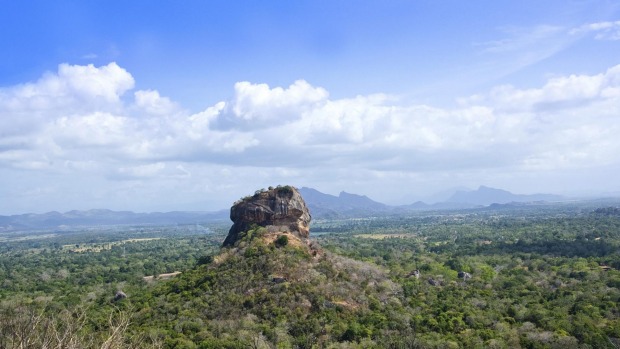
Women sashay past, saris fluttering and hips swaying rhythmically to the thumping drums. The high-pitched whining of a wind instrument draws me like the call of the Pied Piper. I'm swept along by the crowd of spiritual devotees circling a massive white stupa at Anuradhapura in Sri Lanka's Cultural Triangle. The region, in the centre of the island, was the seat of two powerful kingdoms, Anuradhapura and Polonnaruwa. It's the place to visit for statues, relics, ruins and to soak up Sri Lanka's days of glory.
There's an air of mystery around the Cultural Triangle and although more than 2000 years have passed, I can still feel the seductive tug of power from a long-gone kingdom that was once great.
Anuradhapura was established as Sri Lanka's first capital in 377BC by King Pandukabhaya and remained the capital until the 12th century AD.
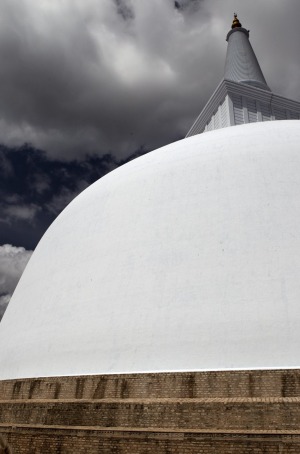
White bell-shaped stupas, some 60 metres high, soar towards the sky and are almost as impressive as Egypt's pyramids or Myanmar's pagodas. But unlike the pagodas, these stupas and dagobas of Anuradhapura are mound-like structures filled with Buddhist relics.
Buddhism has influenced the kingdom's culture, laws, and rule so it's not surprising that one of the main attractions at Anuradhapura is the Jaya Sri Maha Bodhi tree, a sacred fig tree believed to have been planted from a cutting of the Sri Maha Bodhi tree in Bodhi Gaya in India where Buddha attained enlightenment.
It's obvious - from the stream of devotees offering flowers, prayers and chanting around the tree - that this is the drawcard.
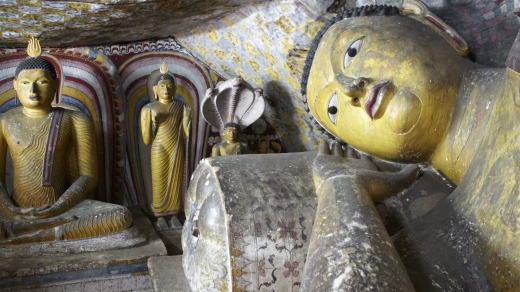
The tree was planted in 288BC and part of its supernatural mystique is that it is believed to be the oldest tree planted by man.
Another ancient capital, Polonnaruwa, was the island's seat of power during the 11th and 12th centuries.
The Polonnaruwa era was a period of engineering and construction. Shrines and stupas were made of brick and temples were built for Hindu gods.
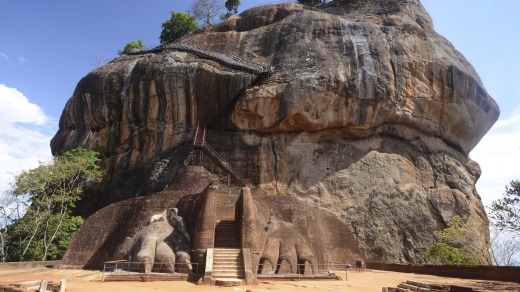
One of the most impressive constructions is Gal Vihara, a group of four gigantic rock-hewn carvings: a large seated figure, a smaller seated figure inside an artificial cavern, a seven-metre tall standing figure and a long reclining figure. These carvings are some of the most impressive ancient sculptures in Sri Lanka.
Hinduism was introduced to Sri Lanka through Chola invaders from South India and several Hindu shrines were built during this era. To grasp the importance of the era, start at the Polonnaruwa Site Museum. It has models, reproduction statues and displays explaining culture and history including a chart with the Singhalese alphabet, a writing system invented 2000 years ago.
Another fascinating attraction is the Parakrama Samudra reservoir and irrigation system, which brought a golden age of agriculture to the region.
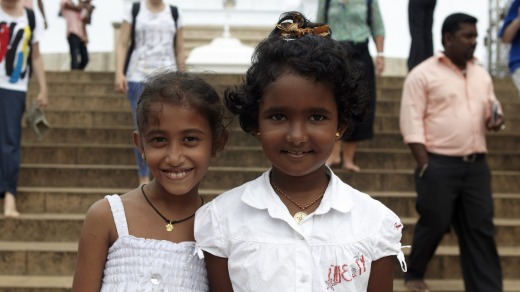
While both Anuradhapura and Polonnaruwa are impressive, for me, the most imposing historic site in the Cultural Triangle is Sigiriya (Lion Rock).
The palace on the rock, built by a king, is a majestic sight towering over the central plains.
It's an effort to climb the staircases to the 200-metre summit of the granite peak, but it would be a shame to not make the effort to scale the fortified palace built on the rock.
The highlight is the well-preserved frescoes of bare-bosomed maidens which, according to one legend, are paintings of some of the 500 women assembled by King Kashyapa as an entourage for his entertainment to enliven his frequent parties.
Their location, on a section of rock protected by shade cloth and accessed by a metal spiral staircase, makes it almost miraculous they have survived.
Walk past ancient graffiti of the Mirror Wall and keep climbing to the ruins of the palace on the plateau, where the remains of a swimming pool and throne look like a backdrop for a scene from The Lord of the Rings.
On the way to Kandy, the Golden Temple of Dambulla is a cave monastery and sacred pilgrimage site with five caves, filled with Buddhist mural paintings and 157 statues, mostly of Buddha.
The caves were established in the third century, not long after Buddhism came to the island, and were refurbished in the 18th century in the Kandy school of art style that typified the era.
There's a colonial-looking fascia and verandah that was built in the 1930s.
The largest of the caves is Maharaja Vihara Lena or Cave of the Great Kings. named because it houses statues of two great Sri Lankan kings, Valagambahu and Nissankamalla.
The cavernous space holds more than 50 statues of Buddha, including an impressive granite statue of a sleeping Buddha.
Kandy is Sri Lanka's sacred Buddhist city and the last capital of the Sinhala kings.
Kandy is home of the Temple of the Sacred Tooth, where Sri Lanka's most important Buddhist relic - a tooth of the Buddha - is kept.
The best time to visit is during the Tooth Festival, one of the country's biggest celebrations. Elephants are adorned with sequins and embroidered coverlets and walked through the streets. There are parties and religious devotions, fire-walking, and acrobatic fire performers who juggle, twirl and swallow flames.
The writer was a guest of Bunnik Tours.
1. Sacred Foot Print Shrine is the ancient pilgrim route along the Mahaweli River from Seruwila to Sri Pada. It passes through places with holy relics of Buddha, which include bones, teeth, hair and a gem-studded chair.
2. Seruwila Mangala Raja Maha Vihara is an ancient temple and Buddhist shrine built during the reign of Kavantissa (2nd century BC), when the Kingdom of Ruhuna was threatened by invaders.
3. Galle's Old Town and Fortifications were constructed in the 16th century by the Portuguese. It is one of the best fortified cities built by Europeans in Asia.
4. Sinharaja Forest Reserve in south-west Sri Lanka is a tropical rainforest with birds, wildlife and trees. More than 60 per cent of the trees are endemic and the reserve is home to more than half of Sri Lanka's endemic species of mammals and butterflies.
5. The Central Highlands in the south-central part of the island is a biodiversity hotspot, where forests rise to 2500 metres above sea-level. The forest is home to endangered species such as the western-purple-faced langur, the Horton Plains slender loris and the Sri Lankan leopard.
MORE INFORMATION
bunniktours.com.au
smartraveller.gov.au
TOURING THERE
Bunnik Tours' "A Taste of Sri Lanka" is a 17-day trip from $4376. Price includes airfares from Melbourne or Sydney, accommodation, some meals, airport transfers.
Tip: Buy a mobile and local SIM card for $28 at the airport.
STAYING THERE
Sigiriya Village, Sigiriya, see sigiriyavillage.com
Hotel Suisse, 30 Sangarajah Mawatha, Kandy, see hotelsuisse.lk